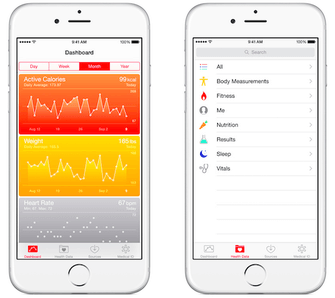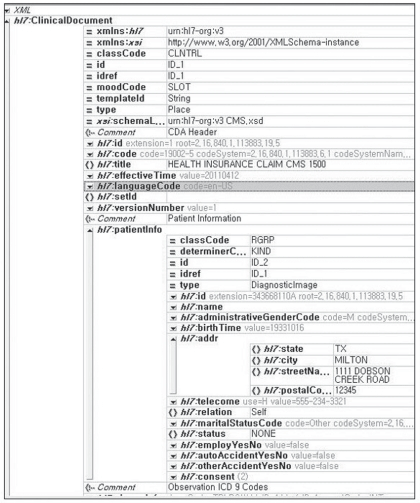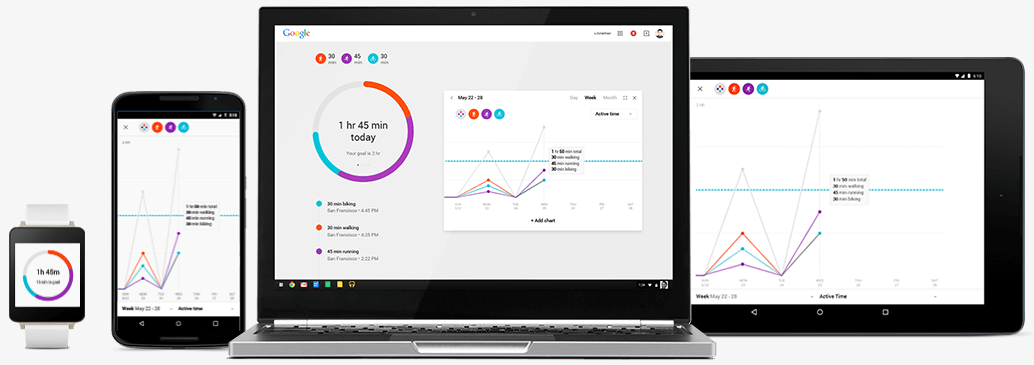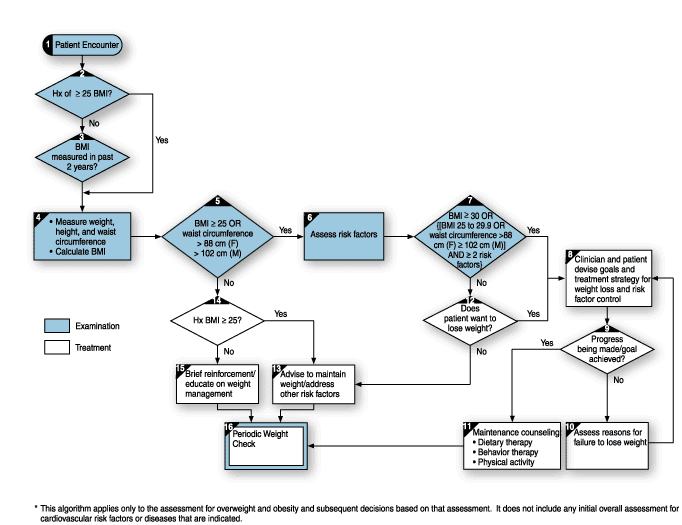Healthcare IT is a complex field that could give healthcare itself a run for its money. What is EHR? What do FHIR, GDPR and HIPAA stand for? Look for answers in our comprehensive glossary.
Accountable care organizations (ACOs) - groups of healthcare specialists, centers and other providers who render high-quality care to their Medicare patients on a voluntary basis.
Activity-based costing (ABC) - an accounting software methodology enabling medical organizations to calculate costs of each case of care provided like hospital, physician, and medication expenses.
Admission, discharge, and transfer (ADT) system - one of the four types of the hospital business system that tracks patients’ admissions, transfers, and discharges.
Ambulatory EHR systems - software that is applied in outpatient care facilities and smaller practices allowing physicians to collect specific info about each patient and providing a full-fledged medical picture of their personal health records.
Ambulatory Medical Record (AMR) - a computer system for collecting, managing, and retrieving EHRs in the outpatient setting.
American Academy of Professional Coders (AAPC) - the expert coding training and certification association for medical programmers, billers, compliance and practice managers in the U.S.
Apple HealthKit - a platform for maintaining data from health and fitness tools on iOS and making it available to Apple users via the company’s Health app. Patients can authorize sharing of the data with their healthcare providers, which in turn add it to EHRs.
 Source: wikipedia.org/wiki/Health_(Apple)
Source: wikipedia.org/wiki/Health_(Apple)
Apple ResearchKit - an open-source framework that allows specialists to develop apps for medical research. It is integrated with HealthKit providing access to info collected from a variety of app-enabled monitoring devices.
Bidirectional Health Information Exchange (BHIE) - a medical info sharing project that allows for two-way PHI data exchanging between the U.S. Department of Defence and the Veterans Health Administration.
Business intelligence (BI) apps - software which supports financial and operational aspects of the healthcare system, including contract negotiations, facility management, measurement of resource utilization, and cost analysis.
Certification Commission for Healthcare Information Technology (CCHIT) - a voluntary, private sector organization for certifying health IT products, such as EHRs and the networks over which they interact.
Clinical intelligence (CI) apps - a software which deals with medical activities like quality improvement, care management, and population health management.
Clinical decision support system (CDSS) - a toolkit that analyzes data to enhance decision-making in the clinical workflow. The software assists physicians and health professionals in, for example, applying a particular diagnosis, specific tests or treatments for their patients.
‘[...] decisions that can benefit from DSS include whether or not to undergo surgery, whether or not to undergo a stress test first, whether or not to have an annual mammogram starting at a particular age, or a computed tomography (CT) to screen for lung cancer, whether or not to utilize intensive care support such as a ventilator, chest shocks, chest compressions, forced feeding, strong antibiotics and so on versus care directed to comfort measures only without regard to longevity.’
Justin D. Pearlman, MD, PhD.
Clinical Document Architecture (CDA) - an XML-based markup standard to provide an exchange model for clinical documents.
 Source: researchgate.net/figure/Fragment-of-HL7-based-clinical-document-architecture-CDA-schema-for-Centers-for_fig4_51614531
Source: researchgate.net/figure/Fragment-of-HL7-based-clinical-document-architecture-CDA-schema-for-Centers-for_fig4_51614531
Clinical documentation improvement (CDI) - the process, often supported by specialized software, that is intended for physicians to enhance their documentation of patient encounters and procedures.
Cognitive computing (CC) - the simulation of human thought process in a computerized model. CC is a branch of artificial intelligence that uses machine learning and natural language processing to reproduce the way the human brain works. The purpose of cognitive computing is to build automated IT systems to solve problems without requiring human assistance.
Computer-assisted coding system (CACS) - software that utilizes natural-language processing to analyze healthcare documents and generate appropriate medical codes for specific phrases and terms within the document.
Computerized practitioner order entry (CPOE) - the process of listing electronic orders for medications and tests using computerized clinical decision support.
Continuity of Care Record (CCR) - a standard for creating and providing timely access to electronic summaries of patient health for other caregivers.
Digital Imaging and Communications in Medicine (DICOM) - a standard for storing and transferring medical pictures enabling the integration of medical imaging devices and PACSs from various producers.
Direct Project - a secure clinical messaging protocol for enabling data exchange between healthcare providers.
Disease management - a system of healthcare interventions and communications for maintaining care and support for patients with chronic illness such as diabetes, HIV/AIDS, and cancer.
Electronic health record (EHR) - a patient’s official health document that is shared among multiple medical organizations. All records are stored in a digital format and include the same types of information, like contact and insurance details, a list of medications and surgeries or procedures performed, etc.
Learn how we developed a custom EHR for a well-known Company.
Electronic Intensive Care Unit (eICU) - a form of telemedicine that uses state-of-the-art monitoring tools to keep an eye on patient’s state of health within the country.
‘We are a second set of eyes for taking care of critical care patients. It’s like an air traffic control center where patients are the blips on radar, and we’re the controllers making sure everything goes smoothly.’
Lisa-Mae Williams, director of telehealth and eICU at Baptist Health South Florida
Electronic medical record (EMR) - the patient record created by providers for specific encounters in hospitals and ambulatory environments. The data may be exportable to an EHR.
E-prescription - a computer-generated appointment created by a healthcare provider and sent directly to pharmacies to avoid paperwork, phone calls or possible fraud.
Fast Healthcare Interoperability Resources (FHIR) - a standard for electronic exchange of healthcare information. FHIR can be used in mobile apps, cloud communications, EHR-based data sharing and among institutional healthcare providers.
FDA (Food and Drug Administration) Regulations of mHealth technologies - a legal act which classifies medical devices into three categories based on the associated risk to ensure safety and effectiveness of the gadgets.
Federal Health Architecture (FHA) - an e-government initiative that coordinates health IT activities among federal agencies responsible for providing medical services. The FHA helps federal institutions invest in standards-compliant technology and ensure the accountability of governmental health IT programs.
General Data Protection Regulation (GDPR) - the set of rules that requires private and public healthcare sectors to demonstrate they are protecting their patients’ data adequately. Any healthcare provider must verify their patients’ identities and organize a system that allows the erasure or rectification of their data. Applicable for companies in EU or targeting EU citizens.
These 7 steps will help prepare your software for GDPR.
Google Fit - a health-tracking platform that collects data from multiple apps and Android devices. The tool uses sensors in a customer’s activity tracker or gadget to record physical fitness activities to provide a complete view of their vigor. Users can decide who accesses their fitness data as well as delete info at any time.
 Source: google.com/fit/
Source: google.com/fit/
Health Employers Data Information Set (HEDIS) - a set of standardized performance measures used by healthcare professionals to compare the quality and services provided by health plans, group practices, and hospitals.
Health information exchange (HIE) - reliable and secure sharing of the healthcare-related data among institutions, health information organizations and government facilities in compliance with national standards.
Health information organization (HIO) - is a U.S. government-led non-profit medical institution which transfers healthcare info electronically across organizations, including smaller clinics, hospitals, medical societies, major employers, and payers.
Health information technology (HIT) - an IT field which involves development, use, and support of information systems for the healthcare industry. Automated and interoperable healthcare information systems are expected to improve medical care, lower costs, increase efficiency and reduce error, while optimizing reimbursement for ambulatory and inpatient healthcare providers.
Health Information Technology for Economic and Clinical Health (HITECH) Act - U.S. legislation passed in 2009 to encourage the adoption of electronic health records and the supporting technology.
Health Insurance Portability and Accountability Act of 1996 (HIPAA) - U.S. legislation that provides data privacy and security provisions for safeguarding medical data. HIPAA Privacy Rules protects sensitive patient info by establishing a set of rights and standards that apply to healthcare provides gathering and storing it electronically or otherwise.
Want to create a HIPAA-compliant app? Contact our healthcare specialists for advice!
Health Level Seven International (HL7) - a set of standards, guidelines, and methodologies for transfer, integration, and retrieval of healthcare information. In theory, the ability to exchange data should minimize the tendency for medical care to be geographically isolated and highly variable.
Home monitoring - the use of technology to remotely monitor a patient’s medical history from their home to enhance their comfort.
Hospital information system (HIS) - a computer system that addresses mainly the administrational needs of hospitals. They manage the data related to the finance department, laboratory, nursing (NIS), pharmacy (PIS), radiology (RIS) and pathology departments.
International Classification of Diseases (ICD) - a system used by healthcare providers to categorize and code all diagnoses, symptoms, and procedures.
Meaningful use (MU) - the U.S. government EHR incentive program, which sets the standards for using health records and exchanging patient clinical data between healthcare providers, insurers, and patients.
Medical algorithm - a step-by-step protocol to address medical challenges like diagnosis or screening. Usually, it is represented as a flowchart or stepwise instruction.
 Source: wikipedia.org/wiki/Medical_algorithm
Source: wikipedia.org/wiki/Medical_algorithm
Medical practice management software (PMS) - a toolkit that is used to manage day-to-day operations of a medical practice, such as appointment scheduling, billing tasks performing and report generating.
Medical Scheduling Software - a solution for managing patient appointments and allocating medical staff.
Mobile health (mHealth) - the accessibility and exchange of clinical and patients’ information via mobile devices and apps.
National Council for Prescription Drug Programs (NCPDP) - a non-profit ANSI-accredited organization that manages a number of standards to improve the communication within the pharmacy industry.
National Health Information Network (NHIN) - a set of technologies, standards, policies, programs, and practices that enable medical data to be shared among healthcare decision makers to improve the industry.
Office of the National Coordination of Health Information Technology (ONC) - a federal institution that regulates and standardizes health technology for general usage in the U.S.
Patient Encounter Costing (PEC) - a cost accounting system that is used to record, analyze, and allocate costs for the individual services provided to patients, such as medications, procedures, analysis, and boarding.
Patient portals - a website that allows patients access personal health information and communicate with their healthcare providers online.
Personal health record (PHR) - a collection of patient’s self-maintained health-related information. PHRs are stored on a personal device or the Internet and can be shared with third parties only with the consent of the owner.
Personal health information (PHI) - medical history, laboratory results, insurance info and other data that a healthcare professional stores to identify an individual and determine appropriate care.
Physician Quality Reporting System (PQRS) - a quality improvement program initiated to determine whether physicians should have their Medicare payments adjusted up or down.
Picture archiving and communication system (PACS) - a healthcare imaging technology which provides economical storage and convenient access to the content, including computed tomography (CT) and magnetic resonance imaging (MRI) results.
Population health management (PHM) - a discipline that studies and facilitates medical assistance across the general population or a group of individuals.
Protected health information (PHI) - any part of a patient’s medical record or payment history that can be used for de-identification before researchers share the dataset publicly.
Remote monitoring - differs from home monitoring with a broader coverage area. The tools are applied to a patient anywhere and send alerts to a nurse station if their condition worsens, reducing the need for close personal monitoring.
Revenue cycle management (RCM) - a financial process that healthcare facilities use to track patients care episodes from registration and appointment scheduling to the final payment.
Telehealth/Telemedicine - the adoption of telepresence or video conferencing to maintain medical consultations or treatments remotely.
Treatment decision support - a set of tools and processes that are used by patients who will receive the treatment to improve their healthcare decision-making.
Vendor Neutral Archive (VNA) - a medical imaging technology in which images and documents are archived in a standard format and accessible to healthcare professionals regardless of what proprietary system created the files.
Virtual visits - a model of healthcare services provision that is based on remote consultations through video or voice connection.
Read more about healthcare software development in our blog:
- Top Healthcare Mobile Apps Using React Native
- Python in Healthcare
- Top 20 Healthcare SaaS Companies from New York
Order your EHR system from Belitsoft - a top Healthcare Development Company!
Rate this article
Recommended posts
Our Clients' Feedback


















.jpg)
.jpg)
.jpg)
.jpg)
.jpg)
.jpg)
.jpg)
.jpg)
.jpg)
.jpg)
.jpg)
.jpg)
.jpg)
.jpg)
.jpg)
.jpg)
.jpg)
.jpg)
.jpg)
.jpg)
.jpg)
.jpg)
.jpg)
.jpg)
.jpg)
.jpg)
.jpg)
.jpg)
.jpg)
.jpg)
.jpg)
.jpg)
.jpg)
.jpg)
.jpg)
.png)
.jpg)
.jpg)
.jpg)
.jpg)
.jpg)
.jpg)
.jpg)
.jpg)
.jpg)
.jpg)
.jpg)
.jpg)
.jpg)
.jpg)
.png)
















We have been working for over 10 years and they have become our long-term technology partner. Any software development, programming, or design needs we have had, Belitsoft company has always been able to handle this for us.
Founder from ZensAI (Microsoft)/ formerly Elearningforce